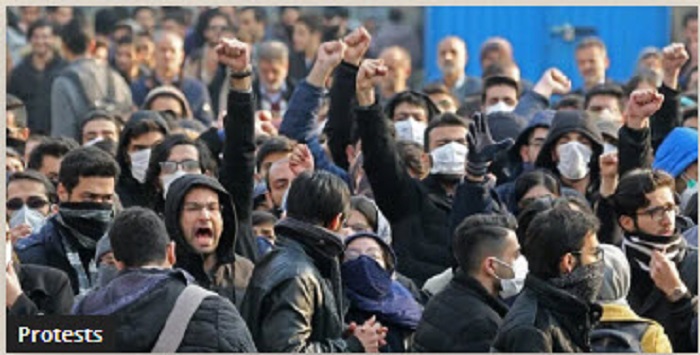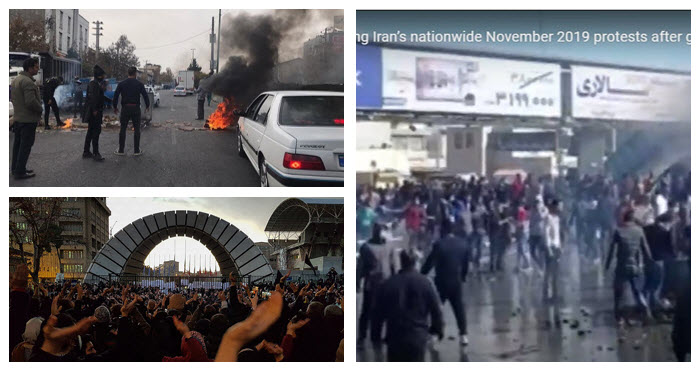
Major protests against the mullahs’ regime have been escalating across Iran in the past few months.
According to a recent study conducted by the Iranian regime’s University of National Defense and Strategic Research, “Three out of every four Iranians will participate in upcoming protests against the regime.”The University, which is affiliated with the Defense Ministry, also warned about the rising number of public grievances and the possibility of nationwide protests similar to those seen in January 2018 and November 2019.
According to the study, people’s rage will manifest as “disturbance, unrest, riots, and protesting collective behaviors.” Public dissatisfaction with the country’s current situation is high, particularly in financial, political, social, and cultural aspects. “At least 76% of people experience social injustice and inequality.”
According to the university’s survey, which was conducted in the capital city of Tehran, 67.2 percent of citizens reported a “high level” of “relative deprivation.”Around 28.4 percent of participants stated that their needs were not met at a ‘high level,’ while 53.9 percent stated that their needs were unmet at a ‘middle level.’

In terms of people’s proclivity to participate in anti-regime protests, the study claimed that only 25.1 percent of people refused to participate in any kind of demonstration.
Three out of every four Iranians protest.
In terms of people’s proclivity to participate in anti-regime protests, the study claimed that only 25.1 percent of people refused to participate in any kind of demonstration. Instead, 41.7 percent said they would participate in low-key protests, 22.5 percent in the middle, and 7.07 percent are enthusiastic about participating in all demonstrations.
This comes as Parliament [Majlis] National Security Chair Mojtaba Zonnour recounted another story about the first two days of November 2019 gas protests. On June 1, 2020, he told the IRGC-Quds Force-affiliated Tasnim news agency, “Some 497 government centers and private sector buildings were damaged due to destruction, fire, and explosion… Aside from the damaged buildings, 194 government and public centers were targeted.”
Then-Interior Minister Abdolreza Rahmani-Fazli, who was in charge of the bloody November crackdown, claimed that 200,000 citizens participated in the gas protests. Rahmani-Fazli claimed sarcastically in an interview with the state-run TV One Channel that demonstrators took part in 100 areas of Tehran and 27 other provinces.
Stunning admissions by Iran's Interior Minister on live TV:
– 200,000 ppl took part in the #IranProtests
– Protests took place in 100 areas of Tehran + in 27 provincesHe is of course minimizing the numbers. After 40 yrs Iran's people are demanding freedom from religious tyranny pic.twitter.com/zlo9oMs8pU
— M. Hanif Jazayeri (@HanifJazayeri) November 27, 2019
Surprisingly, according to reports from human rights activists, bystanders, and families who lost loved ones, the regime murdered over 1,500 protesters during the November 2019 uprising in order to silence people’s legitimate grievances. Between 10,000 and 12,000 demonstrators were also detained by security forces, IRGC affiliates, and intelligence officers.
Citizens discovered the lifeless bodies of several people who had been severely tortured in water canals, beside roads, and other public places in the days following the crackdown. Locals later discovered that the unidentified bodies were those of detained protesters. Many people who were arrested at the time remain unidentified to this day.
“Would the people’s demands not be addressed, public grievances would increase daily, law obedience would decrease, and the bedrock for civil, non-civil, and even violent protests would be met,” researchers said. “In such circumstances, more classes of society, including those in positions of power, would join protests.”
In a nutshell, the researchers are raising concerns about the current situation in Iran. “In such circumstances, authorities can never ignore the risk of mass, unpredictable, and violent riots by hard-hit Iran strata,” they said.
MEK Iran (follow us on Twitter and Facebook), Maryam Rajavi’s on her site, Twitter & Facebook, NCRI (Twitter & Facebook), and People’s Mojahedin Organization of Iran – MEK IRAN – YouTub

